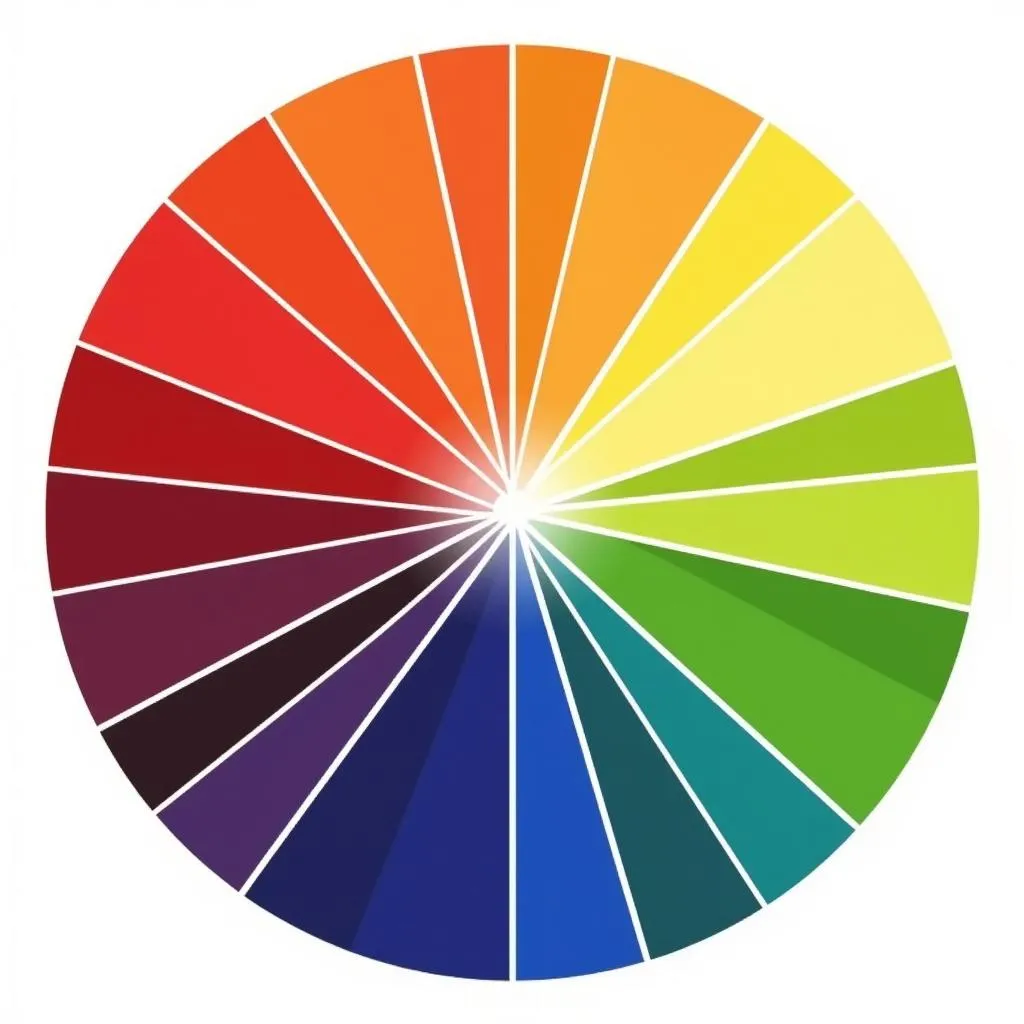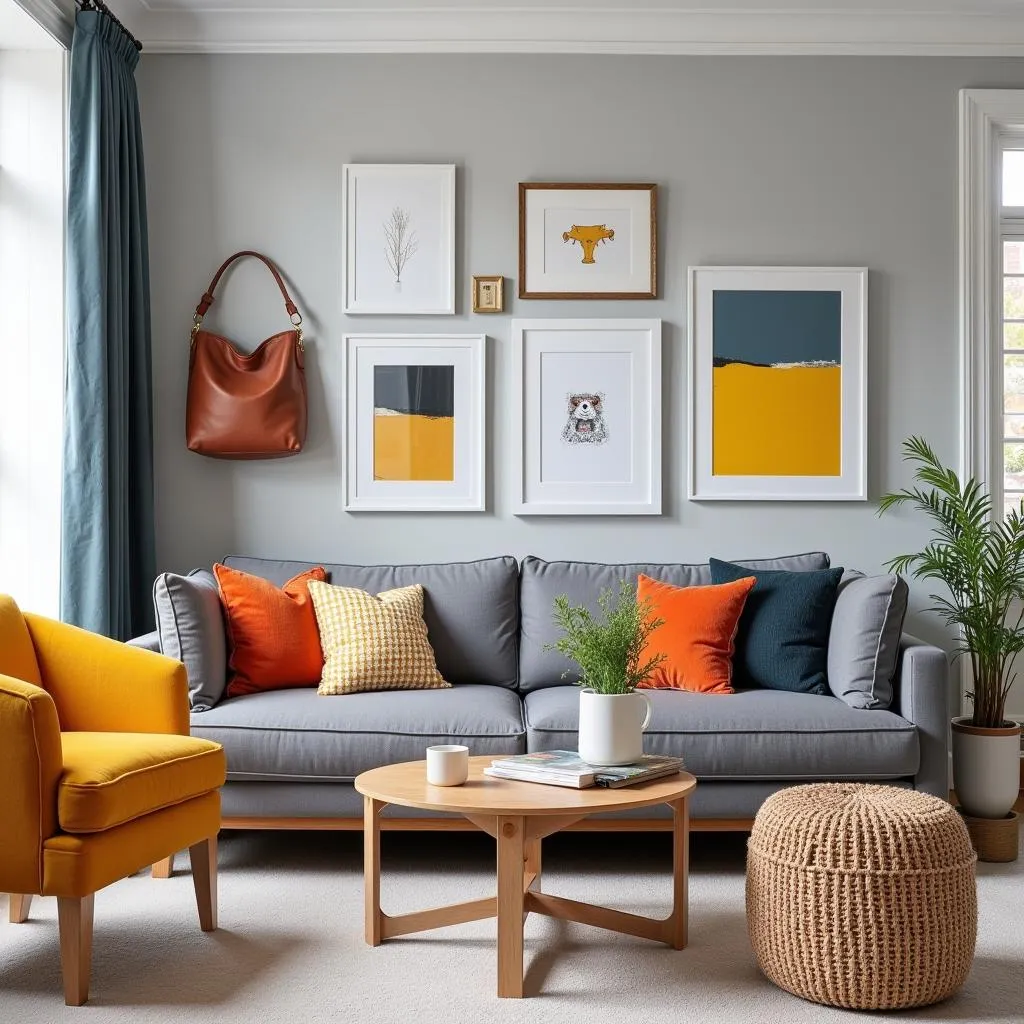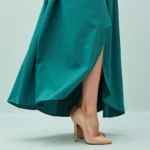Grey: it’s the color of rainclouds, storm-tossed seas, and a well-worn pair of jeans. But have you ever stopped to wonder if grey is truly a color in its own right, or simply a shade of something else? It’s a question that sparks debate even among artists and designers. So, let’s delve into the fascinating world of color theory to uncover the truth about grey.
Understanding Color vs. Shade
Before we can definitively answer the question, we need to establish a clear understanding of the difference between a “color” and a “shade.” In the realm of art and design, these terms hold specific meanings:
-
Color: A color refers to a pure hue, as seen on the color wheel. These are the primary colors (red, yellow, blue) and their secondary and tertiary mixtures. Each color has its own unique wavelength of light.
-
Shade: A shade is created by adding black to a pure color, darkening it while maintaining its essential hue. For example, adding black to red creates maroon, a shade of red.
 Color Wheel with Shades
Color Wheel with Shades
The Case for Grey as a Shade
Based on these definitions, grey most often emerges as a shade. Why? Because we typically create grey by adding black to white. The more black we add, the darker the shade of grey becomes. This is why we have a spectrum of greys, from barely-there dove grey to deep charcoal.
The Argument for Grey as a Color
However, the story doesn’t end there. There are instances where grey can be considered a color in its own right. This mainly occurs in specific contexts:
-
Achromatic Colors: Grey belongs to a group called “achromatic” colors, which are colors devoid of hue. Black and white also fall into this category. While not technically on the color wheel, achromatic colors play crucial roles in art and design, impacting contrast, value, and form.
-
Grey in Nature: While we often associate grey with a mixture of black and white, nature offers examples of grey existing independently. Think of certain animal furs, stones, and even the overcast sky – these greys don’t necessarily arise from a blend of black and white pigments.
 Grey Wolf in a Forest
Grey Wolf in a Forest
So, Is Grey a Color or a Shade?
The answer, as is often the case with color, is: it depends. In most artistic and design applications, grey functions as a shade, achieved by mixing black and white. However, grey can also be classified as an achromatic color, especially when found naturally or used for its unique properties in specific artistic contexts.
Grey in Interior Design
As a color expert and interior design enthusiast, I find grey’s versatility incredibly appealing. Whether you view it as a color or a shade, grey offers a sophisticated backdrop for any room:
- Creating Mood: Light greys evoke airiness and calm, while darker charcoals add drama and depth.
- Versatility: Grey complements almost any color palette, making it ideal for both modern and traditional interiors.
- Timeless Elegance: Unlike trendy colors that fade quickly, grey remains a classic and enduring choice.
 Modern Living Room with Grey Walls
Modern Living Room with Grey Walls
Conclusion
The debate surrounding grey’s status as a color or shade is a testament to the complexity and wonder of color itself. Ultimately, whether you see grey as a shade or a color, there’s no denying its power and versatility in art, design, and the world around us. At Color Box Hanoi, we embrace the full spectrum of grey, from its subtle nuances to its bold statements. Let us help you unlock the potential of this timeless hue to create your perfect space.
FAQs
-
What colors go well with grey in interior design? Grey is incredibly versatile. It pairs beautifully with vibrant hues like yellow or teal for a pop of color, or with muted tones like blush pink or navy blue for a sophisticated look.
-
Is grey a good choice for a small room? Lighter shades of grey can actually make a small room feel larger and more open, especially when combined with plenty of natural light.
-
Can I use different shades of grey in the same room? Absolutely! Layering different shades of grey adds depth and visual interest to a space.
-
What’s the best way to add warmth to a room with grey walls? Incorporate warm textures like wood, wool, or faux fur through furniture, rugs, and throws.
-
I’m overwhelmed by the different shades of grey. How do I choose the right one? Consider the mood you want to create and the amount of natural light in the room. Don’t be afraid to experiment with paint samples to see how different shades look in your space.
Need Help Choosing the Perfect Grey?
Contact us at Color Box Hanoi! Phone: 0373298888, Email: [email protected] or visit us at 86 Cầu Giấy, Hà Nội. Our team of color experts is available 24/7 to help you find the ideal shade of grey for your next project.

